|
|
Updated as per The Hawk Moths of the North America, 2007, James P. Tuttle (Sphinx to Lintneria); April 2009
Updated as per CATE; April 2009
Updated as per personal communication with Derek Bridgehouse; February 8, 2016
Updated as per personal communication with Matthew J. Campbell (oregano, images); September 10 - October 5, 2016
Updated as per personal communication with Michael Van Buskirk (southeastern Arizona); May 20, 2019
|
Lintneria smithi
(Cadiou, 1998) Sphinx
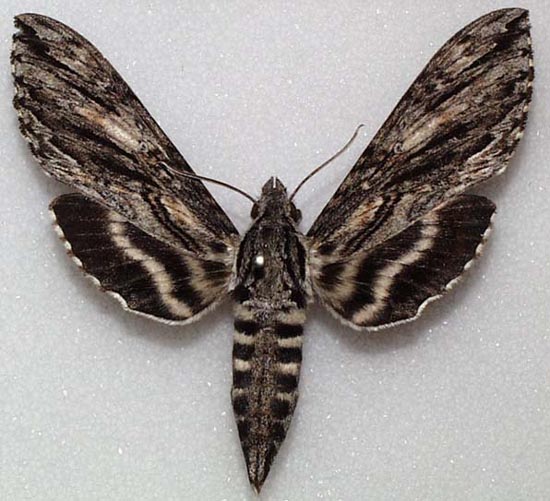
Lintneria smithi courtesy of Bruce Walsh.
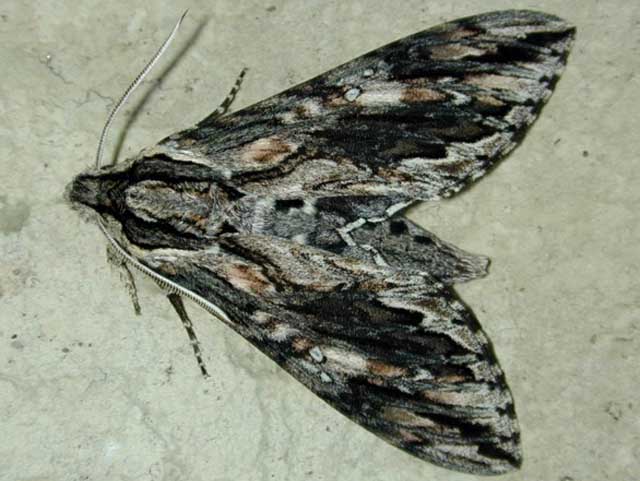
Lintneria smithi male, southeastern Arizona,
courtesy of Michael D. Van Buskirk.
This site has been created by
Bill Oehlke Contact Information.
Comments, suggestions and/or additional information are welcomed by Bill.
TAXONOMY:
Family: Sphingidae, Latreille, 1802
Subfamily: Sphinginae, Latreille, 1802
Tribe: Sphingini, Latreille, 1802
Genus: Lintneria Butler, 1876 ...........
Species: smithi (Cadiou, 1998)
|
DISTRIBUTION:
Smith's Sphinx, Lintneria smithi
(Wing span: approx. 85 mm;; forewing length: males: 34-49; females: 41-42),
flies in northwestern Mexico, southeastern New Mexico and southeastern Arizona.
Until very recently (Tuttle: The Hawk Moths of North America, 2007), this moth was classified as Sphinx smithi.
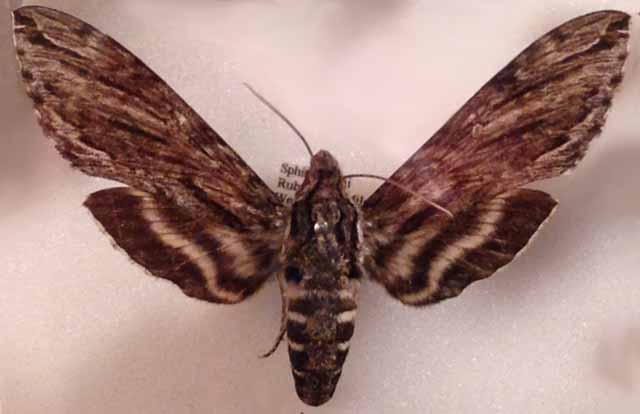
Lintneria smithi, West of Pena Blanca, Santa Cruz County, Arizona,
August 3, 1999, courtesy of Derek Bridgehouse.
"Most similar in pattern to Lintneria xantus, but structurally more similar to Lintneria lugens. Smaller than both
Lintneria xantus and Lintneria lugens; forewing shorter, more rounded apically than in Lintneria xantus; hindwing shorter than in Lintneria xantus.
"Forewing upperside differs from Lintneria xantus in having the pale area that separates the dark apical line from the dark longitudinal pattern posterior to it
on the outer margin smaller; no white double chevron midway along hind margin. The pattern more sharply contrasting than in
Lintneria lugens, with a larger proportion of pale areas; the pale marginal area broader near the tornus; the area on the hind margin just distal to the subbasal
lines paler and more extensive than in Lintneria lugens; fringe more extensively white.
"Forewing underside basal area paler than in Lintneria xantus; the postdiscal band whiter and broader.
"Hindwing upperside with black basal area more extensive than in Lintneria xantus; the postdiscal white band narrower and more sinuate." CATE
FLIGHT TIMES:
Lintneria smithi adults fly in August, and probably in other summer months.
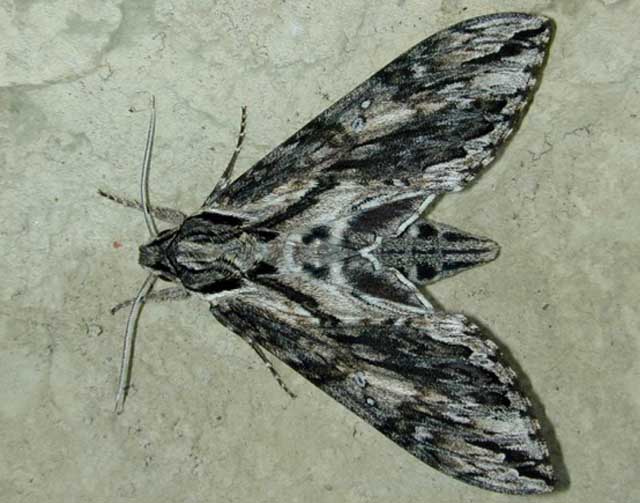
Lintneria smithi female, southeastern Arizona,
courtesy of Michael D. Van Buskirk.
ECLOSION:
Pupae probably wiggle to surface from subterranean chambers just prior to eclosion.
SCENTING AND MATING:
Females call in the males with a pheromone released from a gland at the tip of the abdomen.
Adults nectar at a variety of flowers.
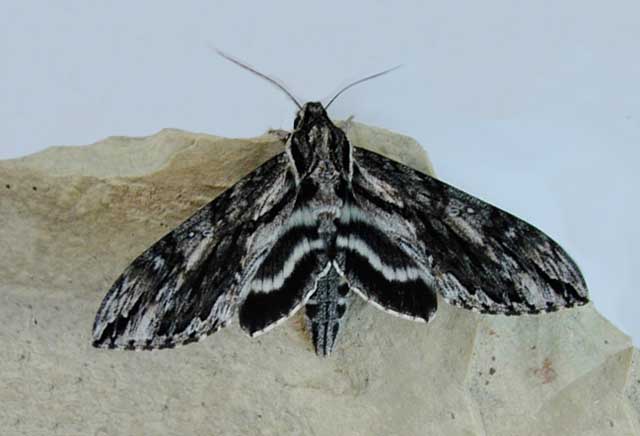
Lintneria smithi female, southeastern Arizona,
courtesy of Michael D. Van Buskirk.
EGGS, LARVAE, PUPAE:
Larvae feed on mints (Salvia) and are mottled white and grey-brown with a purplish tint.
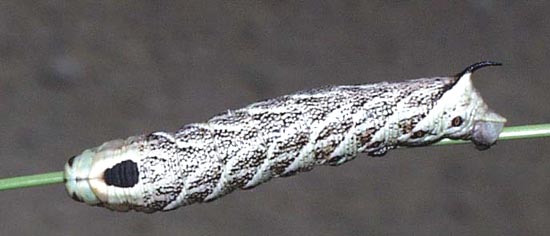
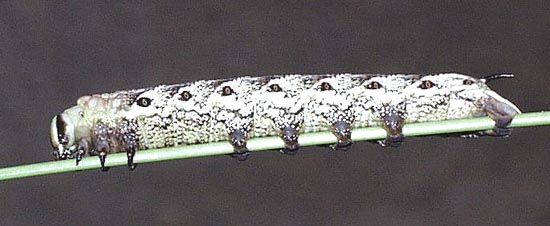
Matthew J. Campbell is having some success rearing them on oregano.
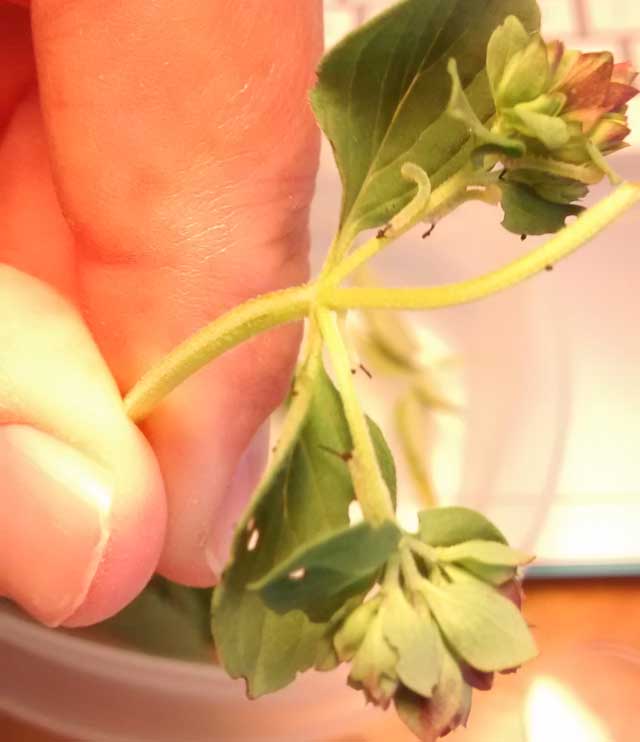
Lintneria smithi first instars on oregano,
courtesy of Matthew J. Campbell.
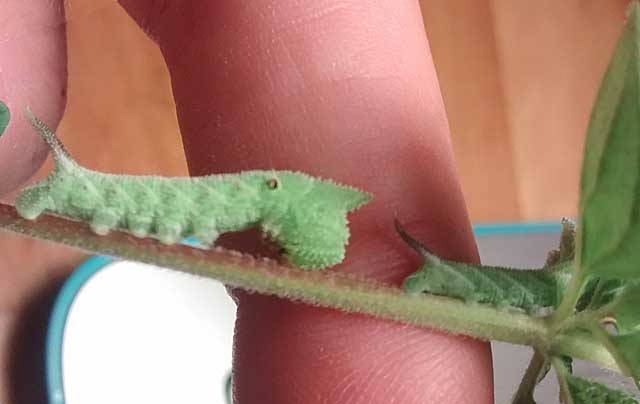
Lintneria smithi second-third instars on oregano,
courtesy of Matthew J. Campbell.
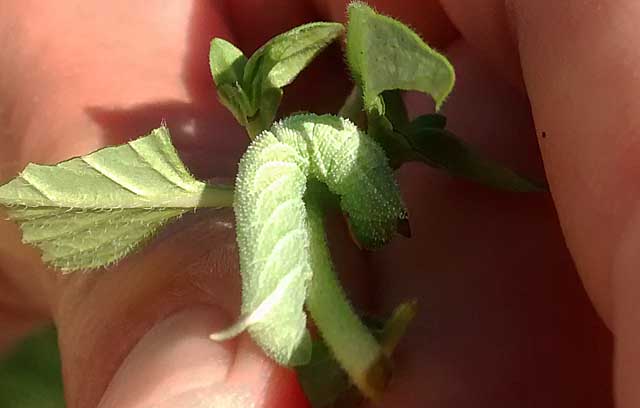
Lintneria smithi third instar on oregano,
courtesy of Matthew J. Campbell.
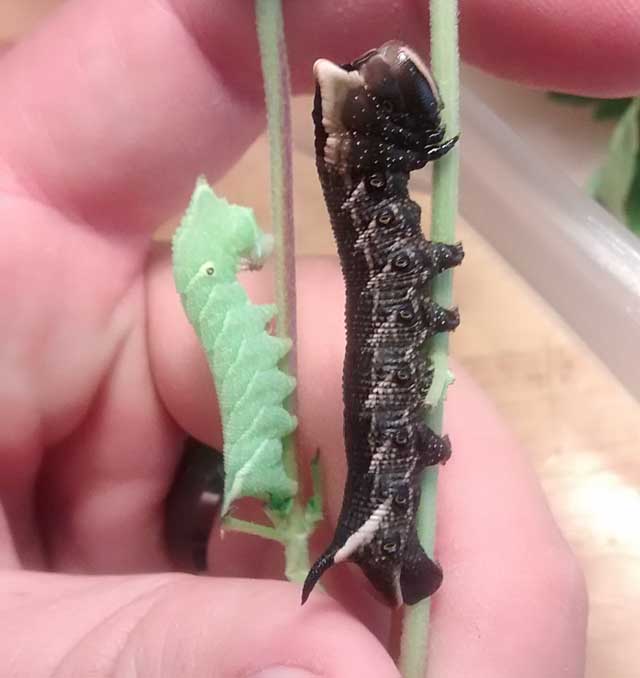
Lintneria smithi third and fourth instars on oregano,
courtesy of Matthew J. Campbell.
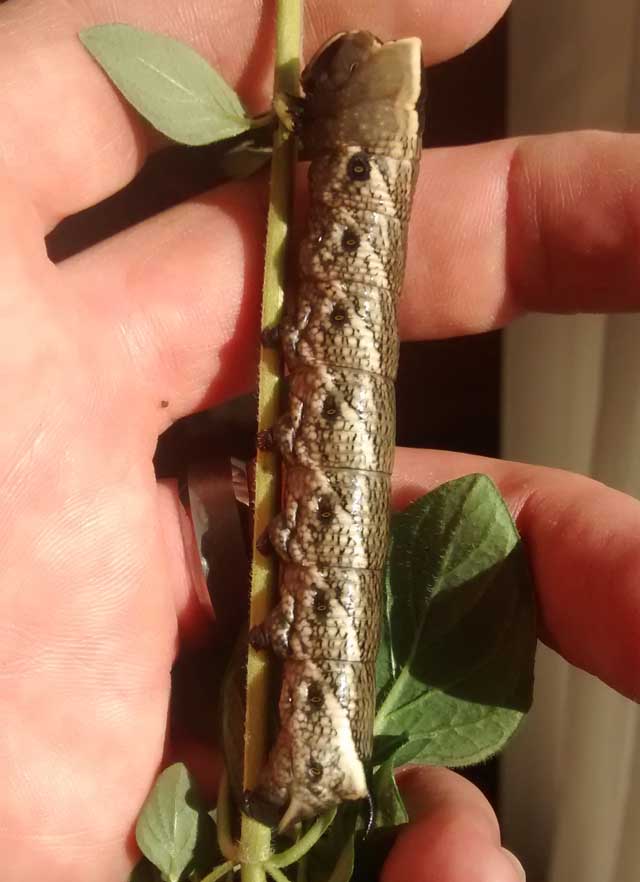
Lintneria smithi fifth instar on oregano,
courtesy of Matthew J. Campbell.
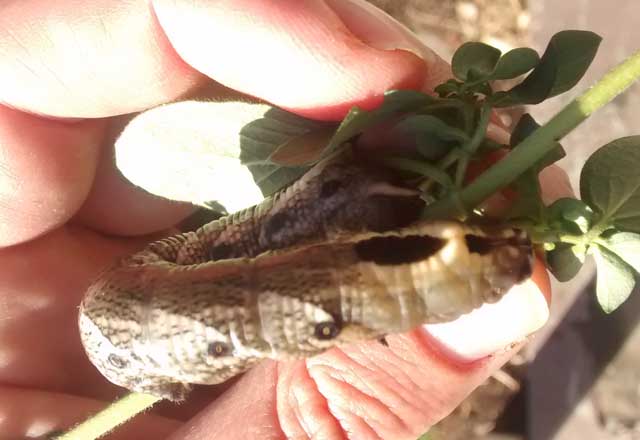
Lintneria smithi fifth instar on oregano,
courtesy of Matthew J. Campbell.
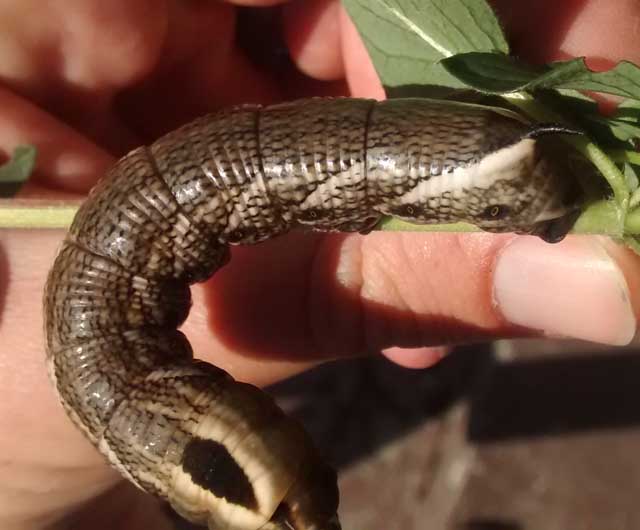
Lintneria smithi fifth instar on oregano,
courtesy of Matthew J. Campbell.
Visit Lintneria smithi additional images
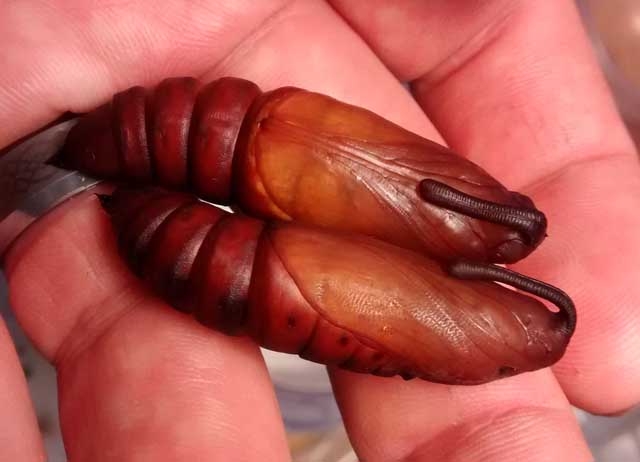
Lintneria smithi pupae,
courtesy of Matthew J. Campbell.
Please visit my special request for images of Lintneria species larvae at
Lintneria larvae, and help if you can.
It is anticipated that the Lintneria larvae will most often be encountered on Lamiaceae: Salvia (Sage), Mentha (Mints), Monarda (Beebalm) and
Hyptis (Bushmints); Verbenaceae: Verbena and Lantana camara (shrub verbenas or lantanas).
Although they may be encountered feeding during daylight hours, one is even more likely to discover them feeding in the evening or after dark.
Two of the greatest clues for discovering larvae are stripped foliage and droppings beneath the plant. You might be quite surprised at what will turn up in the evening or
after dark in a flashlight assisted search.
It is believed that all "Lintneria larvae will exhibit "a fleshy thoracic dorsal "horn" in the first 4 instars (unique in the Sphingidae of the world to my
knowledge) which is replaced by a thoracic dorsal "hump" with a large black patch in the 5th instar." J.A. Tuttle.
Use your browser "Back" button to return to the previus page.
Return to Sphingidae Index
Return to Sphingini Tribe
Use your browser "Back" button to return to the previous page.
This page is brought to you by
Bill Oehlke Contact Information and the
WLSS. Pages are on space rented from Bizland. If you would like to become a "Patron of the Sphingidae Site", contact Bill.
Please send sightings/images to Bill. I will do my best to respond to requests for identification help.
Enjoy one of nature's wonderments: Live Saturniidae (Giant Silkmoth) cocoons.
 | 
Show appreciation for this site by clicking on flashing butterfly to the left.
The link will take you to a page with links to many insect sites. |
















